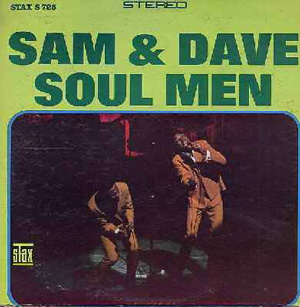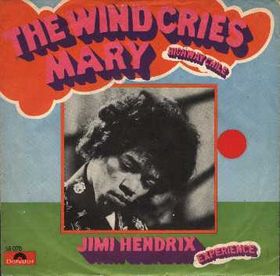 Some songs simmer with quiet beauty, some hit with blunt force, and a rare few manage to do both in a way that feels timeless. Otis Redding’s “Try a Little Tenderness” belongs to that third category. It begins as a gentle suggestion, a plea whispered with velvet patience, and ends as a volcanic eruption of raw, uncontainable soul. More than just a cover of a pre-war ballad, Redding’s 1966 version redefined what emotional music could sound like, pulling together the threads of gospel, rhythm and blues, and the new spirit of soul into a performance that has echoed through generations.
Some songs simmer with quiet beauty, some hit with blunt force, and a rare few manage to do both in a way that feels timeless. Otis Redding’s “Try a Little Tenderness” belongs to that third category. It begins as a gentle suggestion, a plea whispered with velvet patience, and ends as a volcanic eruption of raw, uncontainable soul. More than just a cover of a pre-war ballad, Redding’s 1966 version redefined what emotional music could sound like, pulling together the threads of gospel, rhythm and blues, and the new spirit of soul into a performance that has echoed through generations.
To understand why “Try a Little Tenderness” remains one of the most iconic songs in the soul canon, one has to look at not only the sheer power of Redding’s performance, but also the song’s unusual journey—from its origins as a polite pop ballad to its rebirth as one of the definitive soul anthems of the 1960s.
From Polite Croon to Soul Inferno
Originally written in 1932 by Jimmy Campbell, Reg Connelly, and Harry M. Woods, “Try a Little Tenderness” was first performed as a Tin Pan Alley number. It was sweet, genteel, and aligned with the crooning style of the time. Bing Crosby recorded it in 1933, Frank Sinatra covered it in the ’40s, and countless singers treated it as a lush ballad meant to showcase smooth vocal control rather than emotional rawness.
By the mid-20th century, it had become part of the Great American Songbook—a safe standard, dusted off now and then by jazz singers and pop crooners alike. But safe was never a word to describe Otis Redding.
Redding, a Georgia-born singer who cut his teeth in the Southern soul circuit, was known for taking familiar material and reshaping it into something deeply personal. He had already done so with songs like “Respect” (later immortalized in Aretha Franklin’s hands) and his aching ballads “These Arms of Mine” and “I’ve Been Loving You Too Long.” But with “Try a Little Tenderness,” he found the perfect vessel to show the full range of his artistry.
The Genius of Stax and the Muscle Shoals Sound
The recording of “Try a Little Tenderness” took place at Stax Studios in Memphis, Tennessee, the heart of Southern soul music in the 1960s. Stax wasn’t just a studio; it was a crucible where black and white musicians worked together to craft a sound that was raw, emotional, and deeply human.
The Stax house band—Booker T. & the M.G.’s—were essential to the song’s transformation. Steve Cropper’s sharp guitar work, Donald “Duck” Dunn’s steady basslines, and Al Jackson Jr.’s impeccable drumming gave Redding a foundation that was both tight and flexible. Add to that the triumphant horn arrangements by the Memphis Horns, and the result was a song that built layer upon layer of tension until it became almost unbearable in its intensity.
The brilliance of the arrangement lies in its patience. Unlike many songs of the time, which revealed their hooks immediately, “Try a Little Tenderness” unfolds like a sermon. It begins hushed, delicate, almost formal. Redding’s voice caresses the lines, urging men to show kindness to women who have grown weary from the burdens of life.
But slowly, the rhythm section picks up steam. The horns start to punctuate the lines with sharp bursts. The tempo rises, the groove deepens, and Redding’s voice shifts from tender croon to desperate cry. By the time the song reaches its climax, he is shouting, pleading, almost out of breath, the band surging behind him like a gospel choir on fire.
It’s not a performance that could be mistaken for Bing Crosby. It’s something altogether new.
The Emotional Architecture of the Performance
What makes Redding’s “Try a Little Tenderness” so remarkable is its dynamic architecture. It’s a song built on contrast and escalation.
-
The Gentle Opening: Redding’s delivery at the start is controlled and smooth. He leans into the tenderness of the lyric, almost whispering advice to the listener. The arrangement is sparse, giving space for his voice to shine.
-
The Slow Build: The rhythm section begins to push forward, little by little. The horns enter with stabs that hint at what’s to come. Redding’s vocals grow more impassioned, signaling that this is not just polite advice—this is urgent truth.
-
The Frenzied Climax: By the final minute, the song has transformed into a fiery call-and-response between Redding and the band. His voice cracks, shouts, and growls, pushing his vocal cords to their limits. The band is locked into a driving groove, no longer tender but explosive.
The journey mirrors the arc of intimacy itself—beginning with gentle affection and escalating into overwhelming passion. It’s musical storytelling at its finest, and few singers could pull it off with the conviction that Redding brought to the studio.
Lyrics Reborn
The lyrics of “Try a Little Tenderness” had always been about urging men to treat women with kindness, particularly those worn down by hardship:
“She may be weary, women do get weary / Wearing the same shabby dress…”
In earlier versions, the lyrics could sound condescending or quaint, delivered with a knowing wink by crooners who framed women as fragile objects.
But in Redding’s hands, the lyrics transform. He doesn’t sing them as platitudes; he sings them like gospel truth. His voice imbues them with empathy, sorrow, and urgency. It’s no longer a polite suggestion—it’s a demand. He insists that tenderness is not weakness but strength, not politeness but necessity.
By reframing the lyrics through raw emotion, Redding rescued them from sentimentality and gave them depth and resonance that previous versions lacked.
A Cultural Moment in 1966
The mid-1960s were a time of social upheaval and cultural transformation. The civil rights movement was reshaping America, soul music was rising as the soundtrack of black pride, and artists were pushing against the boundaries of what popular music could express.
“Try a Little Tenderness” fit perfectly into this moment. It wasn’t explicitly political, but it carried a subtext of empathy, respect, and humanity at a time when those qualities were desperately needed. For black audiences, Redding’s voice embodied both the pain of history and the hope of progress. For white audiences just discovering soul, the song was a revelation—proof that music could be both visceral and universal.
The track reached #25 on the Billboard Hot 100 and #4 on the R&B chart, making it one of Redding’s biggest hits. But its impact went far beyond the charts. It became a defining moment in his career and in the history of soul music.
The Song on Stage: Monterey Pop and Beyond
While the studio version of “Try a Little Tenderness” is iconic, its true power was revealed in Otis Redding’s live performances.
At the Monterey Pop Festival in 1967, Redding closed his set with the song, delivering one of the most electrifying performances in rock history. Backed by Booker T. & the M.G.’s, he turned the song into a frenzy of call-and-response energy, the crowd of mostly white rock fans losing themselves in the sheer force of his presence. That night, Redding bridged the worlds of soul and rock, introducing a new audience to the depth of his artistry.
Every time Redding sang “Try a Little Tenderness” live, it was different—longer, wilder, more unpredictable. He treated it less like a pop song and more like a canvas for improvisation, extending the climax until it felt like both he and the audience might combust from the intensity.
Influence on Generations
“Try a Little Tenderness” has been covered countless times since Redding’s version, but few have captured the same magic. Artists from Three Dog Night to The Commitments (whose 1991 film rendition introduced the song to a new generation) have attempted it, but Redding’s remains the gold standard.
The song has also influenced the shape of modern soul and R&B. Singers from Al Green to Prince, from Amy Winehouse to John Legend, have drawn from Redding’s ability to combine tenderness with fire, restraint with explosion. The template he laid down in “Try a Little Tenderness”—the slow build into an emotional detonation—has become a hallmark of soul balladry.
Even hip-hop has embraced the song: Jay-Z and Kanye West sampled Redding’s performance in their 2011 track “Otis,” further cementing his place in the cultural lexicon.
A Tragic Coda
Just a year after releasing “Try a Little Tenderness,” Otis Redding’s life was cut short. He died in a plane crash on December 10, 1967, at the age of 26. The tragedy robbed the world of one of its greatest voices just as he was ascending to new heights.
“Try a Little Tenderness” has since taken on an added layer of poignancy. It stands as one of the final testaments to his genius, a reminder of the passion and depth he brought to every performance. Hearing his voice crack and strain in the song’s climax is a reminder of how much he gave of himself every time he stepped up to a microphone.
Why It Still Matters
Nearly sixty years later, “Try a Little Tenderness” hasn’t lost an ounce of its power. It continues to resonate because it taps into something timeless: the need for empathy, the beauty of restraint, and the overwhelming release of passion.
In an era where so much music is polished to perfection, Redding’s version remains raw, human, and deeply moving. It’s a reminder that the most powerful performances aren’t about technical precision—they’re about emotional truth.
For those who hear it today, whether on vinyl, streaming platforms, or in film soundtracks, the song still carries the same explosive magic it did in 1966. It starts tender, ends wild, and leaves you breathless.
Conclusion: The Eternal Plea
“Try a Little Tenderness” is more than just a song in Otis Redding’s catalog—it is his crowning achievement, a distillation of everything that made him one of the greatest soul singers in history.
It demonstrates his ability to take a standard and make it his own, to lead a band from whisper to roar, and to pour every ounce of his soul into a performance. It shows how tenderness and power are not opposites but complements, how love can be both gentle and fierce.
Above all, it endures because it speaks to something universal. Everyone, at some point, longs for tenderness. And everyone, when moved by Otis Redding’s voice, feels that longing burn like fire.
“Try a Little Tenderness” isn’t just a suggestion—it’s a commandment. And decades later, the world is still listening.


